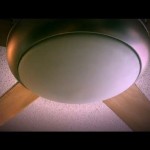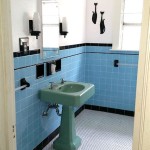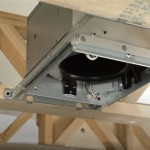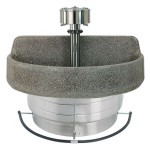Public Bathroom Sink Water Pipe Leaking From Walls And Ceiling: Causes, Consequences, and Solutions
A leaky water pipe in a public bathroom sink is a common problem that can lead to significant damage and inconvenience. The constant drip of water can erode walls and ceilings, causing structural damage, mold growth, and unpleasant odors. This issue can also lead to costly repairs, increased water bills, and potential health hazards for users. Understanding the causes, consequences, and solutions to this problem is crucial for building managers, maintenance personnel, and anyone responsible for maintaining public restrooms.
Common Causes of Leaking Water Pipes
There are several common causes of leaking water pipes in public bathroom sinks. One primary cause is the wear and tear on pipes over time. As pipes age, they become more susceptible to corrosion, cracking, and leaks. Improper installation of pipes is another major factor; poorly installed or inadequately secured pipes can loosen over time and cause leaks. Additionally, fluctuating water pressure can put stress on pipes and lead to weakened areas that eventually leak. Other common causes include:
- Corrosion: Metal pipes, especially older ones, are prone to rust and corrosion, leading to a gradual weakening of the pipe material and potential leaks.
- Cracks and Breaks: These can arise from factors like freezing temperatures, ground movement, or even the pipes themselves being hit during renovations or maintenance.
- Loose Connections: Over time, pipes can vibrate and loosen at joints and fittings, creating leak points.
- Clogged Drains: While not directly related to pipe leaks, a blocked drain can create pressure buildup that forces water out of weak points in the plumbing system.
Consequences of Untreated Leaking Pipes
Ignoring a leaky water pipe in a public bathroom sink can have several harmful consequences, affecting both the building and its occupants. The most damaging consequence is structural damage to the walls and ceiling. The constant drip of water can erode the materials, causing them to weaken and potentially collapse. This can lead to costly repairs and even make the bathroom dangerous to use.
Moreover, the presence of moisture from a leaky pipe creates a breeding ground for mold and mildew, which can cause respiratory issues, allergies, and other health problems for users. The constant dampness can also attract pests like insects and rodents, further compromising hygiene and safety. Beyond these health and safety impacts, leaky pipes can significantly increase water bills, leading to financial strain on building owners.
Solutions to Address Leaking Water Pipes
Addressing a leaking water pipe requires prompt action to mitigate the damage and prevent further deterioration. The first step is to identify the source of the leak. This may involve professional inspection and diagnosis. Once the source is identified, the appropriate solution can be implemented. The most common solutions include:
- Pipe Repair or Replacement: If the pipe is corroded, cracked, or broken, it needs to be repaired or replaced. This may involve patching the damaged area or replacing the entire section of the pipe.
- Tightening Loose Connections: If the leak is due to loose connections, tightening the fittings can often resolve the issue. However, this should be done carefully to prevent further damage.
- Re-piping: In cases of extensive damage or old pipe systems, re-piping may be the most effective solution. This involves replacing the entire plumbing system with new pipes.
- Leak Detection and Repair: Specialized leak detection equipment can be used to pinpoint the exact location of the leak, enabling targeted repair or replacement.
Regardless of the solution chosen, it's crucial to work with experienced plumbers who understand the complexities of plumbing systems in public restrooms. Their expertise ensures proper repair and minimizes the risk of future leaks.
Preventive Measures
Beyond addressing existing leaks, preventative measures can help prolong the lifespan of pipes and minimize the chances of future leaks. Regularly inspecting pipes for signs of corrosion, cracks, and loose connections is crucial. Maintaining proper water pressure and avoiding extreme temperature fluctuations can also help reduce stress on pipes. Additionally, addressing clogged drains promptly can prevent pressure buildup that could lead to pipe leaks.
Implementing a comprehensive maintenance plan with regular inspections and prompt repairs can significantly reduce the likelihood of encountering leaky water pipes in a public bathroom sink. Addressing this issue proactively will not only protect the building's integrity but also ensure the health and safety of users, ultimately promoting a positive experience for everyone.

Bathroom Leak Top 5 Causes Waterleak Co

Piping Leakage Causing Ceiling Repair Water Leak

Why Is Water Leaking From My Ceiling Ranshaw

Is Water Leaking Through Your Ceiling Learn How To Diagnose Fix The Issue Fast

9 Signs Of A Water Leak In Your Bathroom

Water Stain On The Ceiling That S A Serious Plumbing Problem Reliance Sewer Drainage Inc

How To Address Water Damage On The Ceiling Under Bathroom

Fixing Common Leaks Around The Home
Find And Repair Plumbing Leaks Diy Family Handyman

How To Patch And Fix A Leaking Waste Pipe Build Plumb
Related Posts







